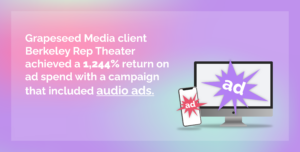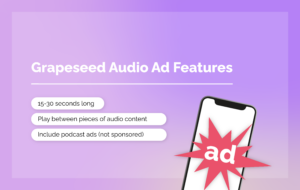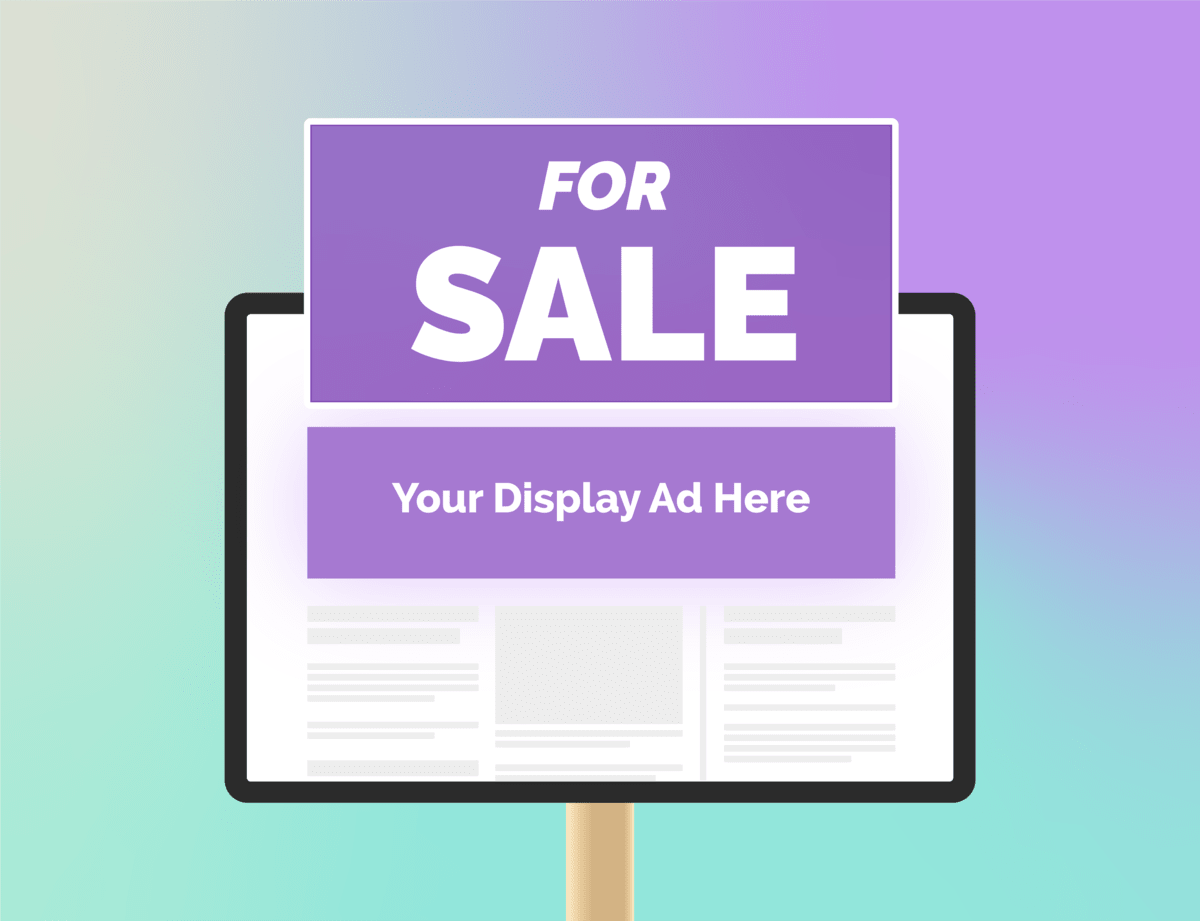Grapeseed’s team of programmatic experts is experienced in helping businesses like yours grow by leveraging the power of multichannel programmatic advertising.
One of the solutions we offer is programmatic audio ad campaigns that contribute to a well-rounded brand experience, helping to drive conversions and increase sales.
Although digital audio has been around for a long time, the pandemic drove a surge in the number of people listening to audio content. By Q2 of 2022, there were 616.2 million music streaming subscribers — up from just under 523 million in Q2 2021.
Podcasts are also growing in popularity, with 40.1 percent of internet users in North America and 28.1 percent of internet users in Western Europe listening to podcasts at least once a month.
The growing popularity of digital audio content represents a huge opportunity for advertisers, and our clients have witnessed the power of programmatic audio first-hand — like the Berkeley Rep Theater in California, which achieved a 1,244% return on ad spend with the help of a Grapeseed-run campaign that included programmatic audio.
Let’s take a closer look at how programmatic audio works (and differs from other types of programmatic ads) and how Grapeseed Media runs programmatic audio campaigns for its clients.

The Nature of Programmatic Audio Advertising
Programmatic audio advertising works a little differently than, say, display or video ads. Although it’s run in the same way as other types of programmatic campaigns, audio isn’t usually a bottom-of-funnel channel, so we don’t tend to explore a lot of direct conversion avenues. The KPI for audio ads is usually the audio completion rate — in other words, how many people listened to it all the way through versus how many skipped the ad.
However, just because audio campaigns don’t usually aim for direct conversion, this doesn’t mean driving conversions through audio ads isn’t possible. A great way to improve the performance of audio ads is through player-of-entry targeting: showing a display ad on the screen during or after the audio ad, which can increase conversions.
On Spotify, for instance, there’s usually a companion banner accompanying an audio ad. It’s a free banner that allows users to click while listening to the commercial and go directly to the website to make a purchase. While an accompanying banner ad isn’t a requirement for audio ads, it’s an option Grapeseed can offer should you choose that route. Additionally, we can track down the funnel to attribute any website visits driven by audio ads.
Although audio tends to be primarily top-of-funnel, it can also work well for middle and bottom-of-funnel, depending on the target audience. If you’re unsure who your audience is and are aiming for a broader campaign, Grapeseed can use audio ads to move users down the funnel. On the other hand, if you’re retargeting a well-known segment of the audience, we can create lower-funnel ads that drive conversions.
What Programmatic Audio Advertising at Grapeseed Media Entails
Here’s what to expect from your Grapeseed audio ads:
- An audio ad is usually 15-30 seconds long and can include anything from professionally produced radio commercials to more impromptu ads that deliver effectively on a limited budget.
- These audio spots are usually played between pieces of audio content (music, podcasts, streaming, etc.) users listen to on audio platforms like Spotify, Google Play Music, Pandora, etc.
- Audio ads include podcast ads as well — not sponsored ads read by the host, but a proper ad that plays in the middle of the podcast.

How We Engage in Targeting at Grapeseed Media
One of the main reasons Grapeseed’s audio campaigns are so effective is that we tailor our targeting to the individual user, and not necessarily the content they’re listening to — although sometimes it can be both.
We take into account both demographic targeting factors, such as age and location, and content consumption tendencies. This enables us to serve ads that are both relevant to the content and the extra-audio context that makes up the individual user.
Here are a few examples of strategies Grapeseed uses to target audiences using programmatic audio:
- We can leverage audio assets that contain branded voicing during initial prospecting efforts to incorporate with CTV and pDOOH and build a cohesive strategy that lifts brand awareness before deploying display ads.
- We can retarget consumers based on audio exposure or audio completion, tailoring your messaging to the amount of exposure they’ve had to your brand.
- Audio companion banners and display retargeting can loop consumers who have only been exposed to audio into your broader digital campaign, bridging the gap between audio and visual display.
- Compared to other channels, audio ads have one targeting option the rest lacks: playlist and genre-based targeting. This allows us to serve the most relevant ads by matching them to the playlists and genres that listeners enjoy.
- Available options: Grapeseed can complement your audio ads with display and native ads to boost campaign effectiveness — for example, ads can feature graphical companion banners.
- At Grapeseed, we can target programmatic audio ads the same way that we can finely target a display ad. For example:
- Mobile footprinting: we retrieve and use mobile location data to deliver localized audio ads based on historical or real-time location.
- Geotargeting: targeting an audio ad based on geographic location.
- App ownership personas: targeting based on the apps people have on their phones.
Set Up Your Programmatic Audio Campaign with Grapeseed
Grapeseed Media specializes in helping brands like yours grow through a customized ad strategy that leverages programmatic audio for greater impact and more sales.
Schedule a call with our team of programmatic ad experts to discover the best programmatic audio solutions for your business.






